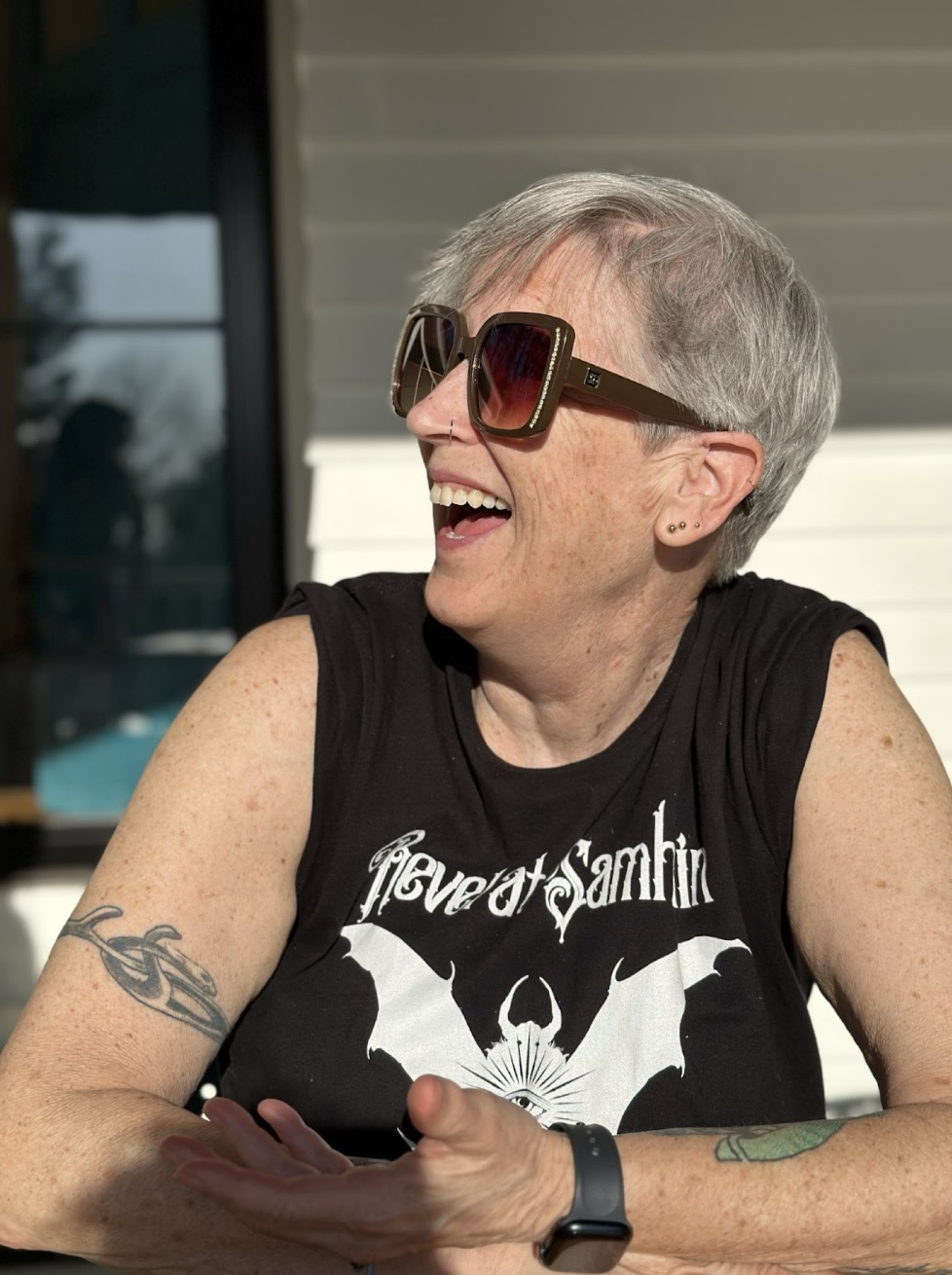
The Curve of Things
ISBN: 9781960327055
2024, CavanKerry Press
$18, 72 pages, paper
Reviewed by Basia Wilson
In crafting a poem, any good poet knows to consider the myriad ways a reader may approach their work. Take, for instance, a poem that includes the second-person pronoun “you.” The poet may intend for the speaker to address the audience directly, calling on whoever is reading to come to the poem as an interlocutor or participant. On the other hand, the poet’s invoking of “you” may represent a choice to look past the reader and instead address a specific fixed subject, prioritizing that enchanted space between the speaker and their addressee. A reader may then arrive as an eavesdropper: someone who stands outside of the poem’s intimacy as if watching from a window, though a good lyric poem allows us to altogether forget we are even at this window, so close we become not merely to the lyric “I” or the “you” they speak to, but their shared moment and its emotive center. Take “On Your Fourth Birthday,” a poem in Kathy Kremins’s The Curve of Things, published by CavanKerry Press. We witness the speaker drawing a connection between her beloved here-and-now and her beloved’s younger self.
I have captured you in this pose,
a hazy light attaching itself to your skin,
as you stand, naked, after love.
Sometimes I wonder where you go
but am satisfied that in some way
you have held me as tightly
as those things you loved as a child.
Such moments fill Kremins’s full-length debut, positioning the reader as a witness to episodes of loving, lovelessness, and loving again. Boasting an aphoristic opening line, “Loving a woman is not linear,” the title poem unspools as both litany and praise-song—a rich collage of images that traces life’s curvature in “the printed letter G, a slow word / your breasts in profile, my mouth on your neck, / the silt-rich molehills, a scared possum, / the crystal goblet half-filled, a globe, / an enjambed line, a lullaby, /a baby’s pout, the geography of your foot.” Recalling curves bodily and earthly, architectural and sonic, Kremins evokes a divine hand running a finger along her world. A finger that, in its twirling, meandering and curling, caresses that very world into being. This is explored more overtly in “Tracings.” The speaker remembers observing a model posing for a mermaid sculpture on a public street, taking care to differentiate between the “reclining sea maiden” the artwork seeks to depict, and the actual girl who poses for this depiction. The speaker notes how some passersby pause “to marvel at the girl’s beauty / some at the art of the mermaid.” The speaker herself, “tracing [her] fingers over [her] body,” ultimately elects to focus not on the “life / lines” drawn by the sculptor, but on the girl’s face, “trying,” she admits, “to give myself a little bit of life.”
Charting a sophisticated parallel between sculptor and speaker, “Tracings” considers true beauty and embellished beauty, culminating in a solitary longing for the real thing. More than that, it is also one of the rare poems in The Curve of Things that forgoes a direct addressee. Amid a collection that candidly and intimately revisits connections with beloveds and loved ones, this absence of “you” fittingly lends the poem a feeling of isolated distance. The same is true for “Coming Out in Dublin, 1980,” where our speaker’s otherness as a “wild American with her first passport” makes of her a spectacle among “queer women who struggle to utter / words that resemble love // like so much else unsaid in Ireland,” where it seems “as if desire hasn’t been born yet.” Sitting at a scrubby, somber pub with these guarded bar mates, the speaker tacitly acknowledges the women’s hopes to share in her apparent, nascent freedom at the poem’s end, “so that someday they might dance away from shame / to the turning of a naked woman / Celtic cross tattooed on her breast / skin dusted with smoky peat, / sweet grass, and crackling air.” It’s unclear whether the speaker’s Irish companions will ever experience this unabashedness. And despite the poem’s sensual final image, it remains doubtful whether the speaker, “an American with a mind and body / but without a soul” is yet capable of showing them how.
“A Controlled Burn,” however, introduces a matured speaker. Opening with a solitary tree cognizant of a coming storm, the poem initially forgoes both first- and second-person pronouns, referring to the tree as “she” who the storm “feeds” and “makes brighter from the inside out.” This tree elegantly mirrors the poem’s speaker, who, notably distant in the first three stanzas, grows nearer in the poem’s final lines. Addressing her beloved, the speaker calls forth “you [who] touched my cheek / with a lightness that cracked / me open, raw, a strike of lightning / that set me on fire / and saved me.” As in this poem, and throughout The Curve of Things, Kremins demonstrates the ability of loss and loneliness to not dull love’s power—not if we let it—but deepen it instead, so long as we choose to offer ourselves to its transformative strengths.
Published in Cider Press Review, Volume 27, Issue 1.
See all items about Basia Wilson
Visit Basia Wilson’s contributors page.
See all items about Kathy Kremins
Visit Kathy Kremins’s contributors page.


 Basia Wilson is a poet. A Pushcart Prize nominee and finalist for the 2022 Banyan Poetry Prize, her poetry and reviews have appeared in Tribes Magazine, Philadelphia Stories, Voicemail Poems, bedfellows, Platform Review, Barrelhouse, and The Rumpus. She walks, wonders, and writes in South Jersey.
Basia Wilson is a poet. A Pushcart Prize nominee and finalist for the 2022 Banyan Poetry Prize, her poetry and reviews have appeared in Tribes Magazine, Philadelphia Stories, Voicemail Poems, bedfellows, Platform Review, Barrelhouse, and The Rumpus. She walks, wonders, and writes in South Jersey.  Kathy Kremins is a retired New Jersey public school teacher. She has two chapbooks of poems, Seamus & His Smalls (Two Key Customs, 2023) and Undressing the World (Finishing Line Press, 2022). Her debut full-length poetry collection is The Curve of Things (Cavankerry Press, 2024). Her hybrid (poetry/prose) collection, Sipping a Cloud, will be published by Read Furiously in 2025. She is also an editor for New Jersey Audubon Magazine.
Kathy Kremins is a retired New Jersey public school teacher. She has two chapbooks of poems, Seamus & His Smalls (Two Key Customs, 2023) and Undressing the World (Finishing Line Press, 2022). Her debut full-length poetry collection is The Curve of Things (Cavankerry Press, 2024). Her hybrid (poetry/prose) collection, Sipping a Cloud, will be published by Read Furiously in 2025. She is also an editor for New Jersey Audubon Magazine. 


